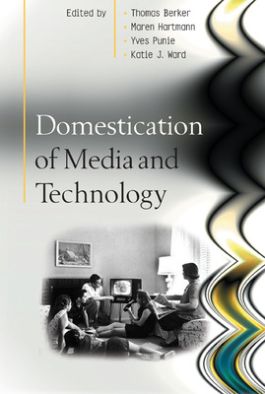Domestication of Media and Technology
Receive via shipping:
- Colour, print bound version of the complete text
1. Introduction
Part I. Updating domestication: Theory and its history
2. What’s ‘home’ got to do with it? Contradictory dynamics in the domestication of technology and the dislocation of domesticity
3. Domestication: the enactment of technology
4. Domestication running wild. From the moral economy of the household to the mores of a culture
5. The triple articulation of ICTs. Media as technological objects, symbolic environments and individual texts
6. Empirical studies using the domestication framework
II. Applying domestication: Empirical work
The first part of Domestication of Media and Technology provides an overview of the conceptual development and theory of domestication. In the second part of the book, contributors look at a diverse range of empirical studies that use the domestication approach to examine the dynamics between users and technologies. These studies include:
- Mobile information and communications techologies (ICTs) and the transformation of the relationship between private and the public spheres
- Home-based internet use: the two-way dynamic between the household and its social environment
- Disadvantaged women in Europe undertaking introductory internet courses
- Urban middle-class families in China who embrace ICTs and view them as instruments of upward mobility and symbols of success
Contributors: Maria Bakardjieva, University of Calgary; Thomas Berker, Norwegian University of Science and Technology; Leslie Haddon, Essex University; Maren Hartmann, University of Erfurt; Deirdre Hynes, Dublin City University; Sun Sun Lim, National University of Singapore; Anna Maria Russo Lemor, University of Colorado at Boulder; David Morley, Goldsmiths College, University of London; Jo Pierson, TNO-STB, Delft, Netherlands; Yves Punie, Institute for Prospective Technological Studies (IPTS) in Seville; Els Rommes, Nijmegen University; Roger Silverstone, London School of Economics and Political Science; Knut H. Sørensen, Norwegian University of Science and Technology; Katie J. Ward, University of Sheffield.

